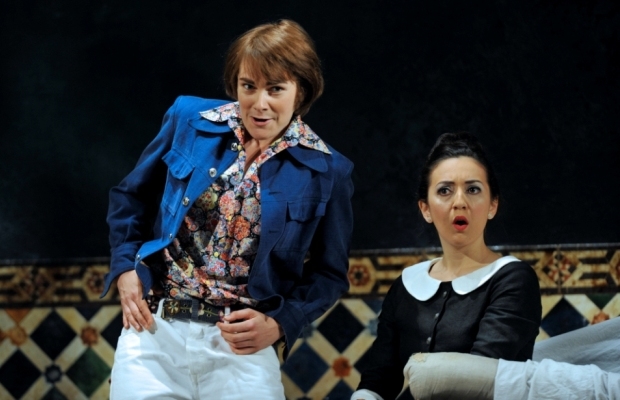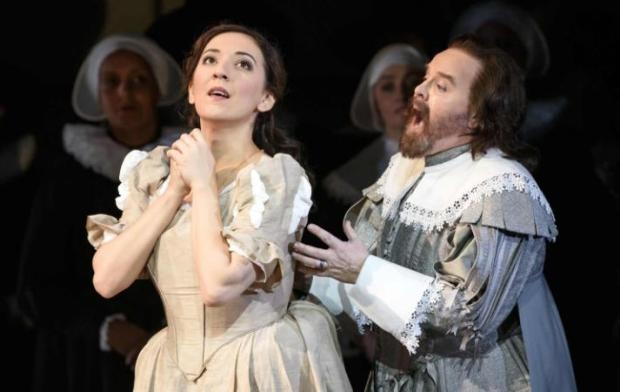Le nozze di Figaro (Glyndebourne)

© Robbie Jack
The best Figaro nuptials are those, rare as hens’ teeth, where act four doesn’t seem an act too far. Michael Grandage‘s Glyndebourne staging of The Marriage of Figaro, first seen in 2012 and revived here by Ian Rutherford, may fail that test (too static, too dimly lit, too inconsequential) but up to the last half-hour here’s a production that does pretty darn well.
It’s not accurate to say that this is all thanks to the women (although Davide Luciano‘s under-characterised Figaro somehow contrives to feel like a guest at his own wedding), but you would go a long way to see and hear a finer ensemble of distaff singers. Rosa Feola, this year’s WhatsOnStage Opera Poll winner (for I puritani at WNO), is an irresistible Susanna, and her bright and meticulously shaded delivery finds the perfect partner in Golda Schultz as the Countess. The young South African singer, new to these shores, has a mellow, cleanly focused timbre with warmth to spare, and the two sopranos’ letter duet, "Sull’aria", is a dream.
With sharp turns from Susan Bickley (Marcellina) and Nikola Hillebrand (Barbarina), and a fabulously stage-grabbing Cherubino from Natalia Kawalek who not only delivers the showstoppers beautifully but fidgets her way through the teenage boy’s adolescent crushes as though someone’s spiked her testosterone, it’s an exhilarating evening of female singing and stagecraft.
'Cheap pot and free love'
Using five sets and a revolve, designer Christopher Oram locates Le nozze di Figaro amid the ancient, unchanging Moorish architecture of Seville. During a frantically busy overture we could be in any century… until first we glimpse a big collar, then a set of platform heels, and finally a bright red sports car. Yes, it’s the 1960s, the era of cheap pot and free love—as Grandage acknowledges in a programme note. (Except that kaftans and flares and big lapels came a few years later. I know; I was there.)
Gyula Orendt‘s toking, smoking Count Almaviva cuts a faintly pathetic figure within his own palace. You’d never back the stoned nobleman to get his wicked way with wily Susanna. But the Romanian baritone’s big scena early in act three, red-blooded with anger, is an impressively emphatic moment.
At the head of the Orchestra of the Age of Enlightenment, Jonathan Cohen spins a beautifully shaped account of perhaps Mozart’s greatest operatic score. Everything feels right apart for one blip: his unyielding way with the blissful aria "Dove sono", in which the Countess recalls past happiness with her errant husband (cf. The Barber of Seville, Rossini's 'prequel' from Beaumarchais' earlier play). Schultz, at her most lyrical, tries to suffuse her performance with wistfulness as well as beauty, but Cohen's no-nonsense, romance-free reading shuts her down. A shame, given that the rest goes so well.
Nevertheless, in an evening blest with many pleasures from Carlo Lepore‘s excellent Bartolo to Ben Wright‘s euphoric dance at the end of act three (infectiously revived here by Kieran Sheehan), few would disagree that Glyndebourne‘s glorious Figaro is a marriage for keeps. Here's to its next anniversary.
Le nozze di Figaro (The Marriage of Figaro) runs in repertory at Glyndebourne until 24 August.











